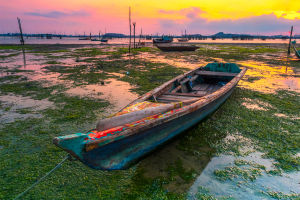Cross-sea bridges represent remarkable achievements in human engineering, seamlessly integrating practicality with architectural elegance.
While these constructions are impressive during the day, it is during the night that their true enchantment is unveiled.
The nighttime allure of cross-sea bridges is a complex experience, involving their lighting, the surrounding nocturnal scenery, and the emotional impact they have on viewers.
One of the most remarkable aspects of cross-sea bridges at night is their lighting. Thoughtfully designed lighting systems transform these structures into luminous ribbons spanning the water, creating a captivating visual display. The lights often accentuate the architectural details of the bridge, from its sweeping curves to towering pylons. For example, the Akashi Kaikyō Bridge in Japan, among the world's longest suspension bridges, becomes a luminous marvel after dark, with color-changing lights marking different occasions and seasons. This illumination not only enhances the bridge's beauty but also ensures safe navigation for ships and vehicles.
The interaction between the illuminated bridge and its reflection on the water adds another dimension to its nighttime allure. The gentle movements of the sea create a dynamic canvas that mirrors the bridge's lights, intensifying the visual impact. This reflection can be particularly enchanting from a distance, where the bridge appears to hover above the water's surface, suspended in a tranquil, almost mystical atmosphere. The Qingdao Haiwan Bridge in China, spanning over 26 miles, presents such a spectacle, its lights casting a shimmering pathway across the expansive Yellow Sea.
Apart from their lighting effects, cross-sea bridges harmoniously merge into the nighttime scenery. These bridges frequently link bustling urban centers, bridging physical gaps as well as cultural and economic divides. At night, the juxtaposition of the calm sea and the lively city lights on either side of the bridge creates a compelling contrast. The Øresund Bridge, connecting Denmark and Sweden, illustrates this dynamic. By day, it showcases modern engineering prowess; by night, it transforms into a tranquil pathway amid two shimmering cities, seamlessly blending natural and urban splendor.
The nighttime appeal of cross-sea bridges extends beyond the visual, resonating deeply on an emotional level. These structures embody human creativity, persistence, and the aspiration for connection. After the day's hustle and bustle recedes, experiencing or observing a cross-sea bridge at night can be a profoundly introspective experience. The expansive, dark sea contrasted with the illuminated path ahead can evoke feelings of optimism and fascination. For instance, the Golden Gate Bridge in San Francisco transcends its role as a mere transportation link to become an iconic symbol that inspires admiration and contemplation, especially when its silhouette is bathed in the gentle glow of nighttime illumination.
At night, cross-sea bridges also carry cultural and social importance. They often evolve into landmarks and sources of local pride for the areas they link. Nighttime activities, such as light displays and festivals, often revolve around these bridges, uniting communities and nurturing a sense of collective identity. For example, the Penang Bridge in Malaysia is honored with an annual midnight marathon, underscoring its role as a cultural symbol and gathering people in a distinctive nocturnal event.


